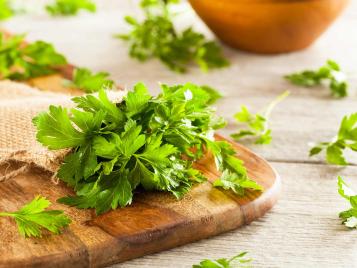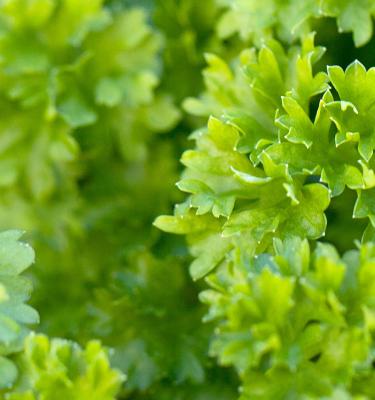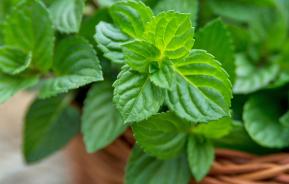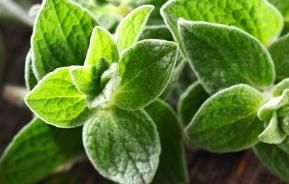Parsley is a very commonly grown herb, used mainly as a garnish and to make delicious parsley sauce. But it is also an excellent ingredient for flavouring savoury dishes, making flavoured butter and stuffings and is very rich in vitamin C.
The more usual curly-leaved parsley looks good when used as a garnish, but flat-leaved parsley (pictured above) has a better, stronger taste and is a better choice for cooking.
How to grow parsley
Cultivating parsley
For the main summer crop, you can grow parsley in either a partially shaded position or full sun. An overwintering crop will need a protected site in full sun.
Parsley needs a fertile, moist, but well-drained soil.
Parsley varieties
Parsley is available as the common curly-leaved parsley, but don’t forget flat-leaved, French parsley.
Common parsley: Bravour, Champion Moss Curled, Envy
French parsley: Festival 68, Italian
There is also Hamburg parsley, which is grown as a root vegetable.

Sowing parsley
Parsley seeds are very slow to germinate, taking up to one month, especially in very wet, cold soils. So make sure the soil is warm and even pre-warmed by covering with cloches for very early sowings.
Sow seed thinly outdoors from March to July in well-prepared soil in drills 30cm (12in) apart and thin out the young plants to 10-15cm (4-6in) apart.
Seeds can also be sown indoors from August to March in cell or plug trays filled with seed sowing compost at a temperature of 18-21°C (65-70°F). Lightly cover the seed with more compost and keep moist. Grow on the seedlings in cooler conditions of around 10°C (50°F) and plant outside when the last frosts are over, after hardening off – gradually acclimatising them to outdoor conditions – for 10-14 days.
Planting parsley
You can also buy young parsley plants from garden centres, which can be planted outside anytime from spring to late summer.
Dig over the planting area, incorporating some organic matter – such as compost or leaf mould – if the soil is heavy clay. Dig a good sized hole big enough to easily accommodate the root ball.
Place the root ball in the planting hole and adjust the planting depth so that the crown of leaves is at soil level.
Mix in more organic matter with the excavated soil and fill in the planting hole. Apply a general granular plant food over the soil around the plants and water in well.
Or grow plants indoors on a brightly lit windowsill to have fresh leaves readily to hand.
How to care for parsley
Keep the soil moist by watering parsley regularly during prolonged dry periods; dry soils can cause the plants to ‘bolt’ (going to seed prematurely).
Parsley is a hungry plant, so use a general granular plant feed in the soil before sowing or planting out and feed with a liquid plant food throughout summer.
Should plants start to flower and go to seed, remove the flower heads immediately. This usually signifies the plant is getting past its best and you should grow some more to replace it.
Parsley is a hardy biennial and can carry on into autumn to provide small pickings over winter. Cover plants with a cloche to give protection from cold and so provide pickings for longer. Parsley is in the same family as carrots and is subject to carrot root fly attack, so cover early sowings with a cloche or horticultural fleece to protect plants against the female laying eggs in the soil.
Harvesting parsley
Don’t start harvesting the plants until there are at least 8 to 10 leaves. Then pick regularly to encourage a continual supply of leaves. Cut single leaves or bunches of leaves, starting low down on the stems.
Although fresh leaves have the best flavour, any excess can be frozen or dried in a microwave.
Dig up Hamburg parsley roots when they’re large enough to use. They should be ready to harvest 3 to 4 months after sowing. The roots can be left in the ground in winter and dug up when needed. The leaves can also be used as any other type of parsley.
Parsley growing conditions
| Flowering season(s) | Summer |
|---|---|
| Foliage season(s) | Spring, Summer, Autumn, Winter |
| Sunlight | Partial shade, Full sun |
| Soil type | Clay, Loamy |
| Soil pH | Neutral |
| Soil moisture | Moist but well-drained |
| Ultimate height | Up to 20cm (8in) |
| Ultimate spread | Up to 15cm (6in) |
| Time to ultimate height | 3-4 months |








